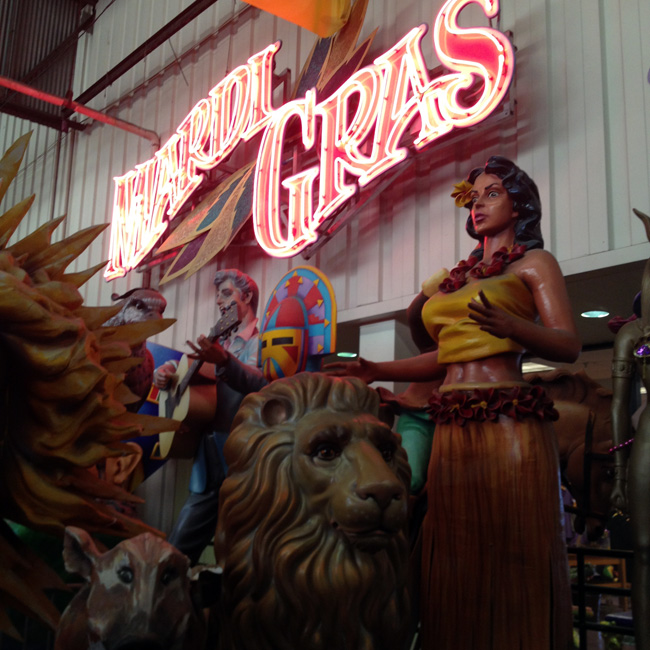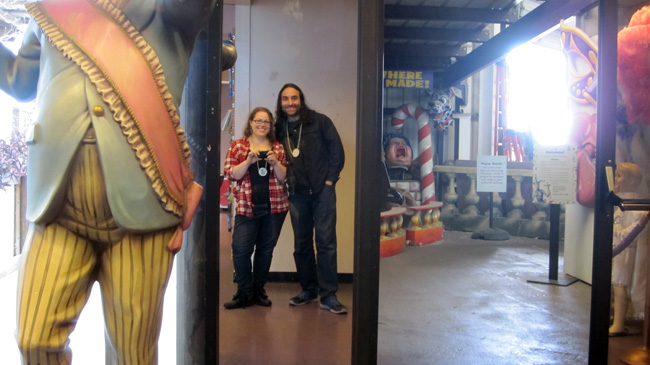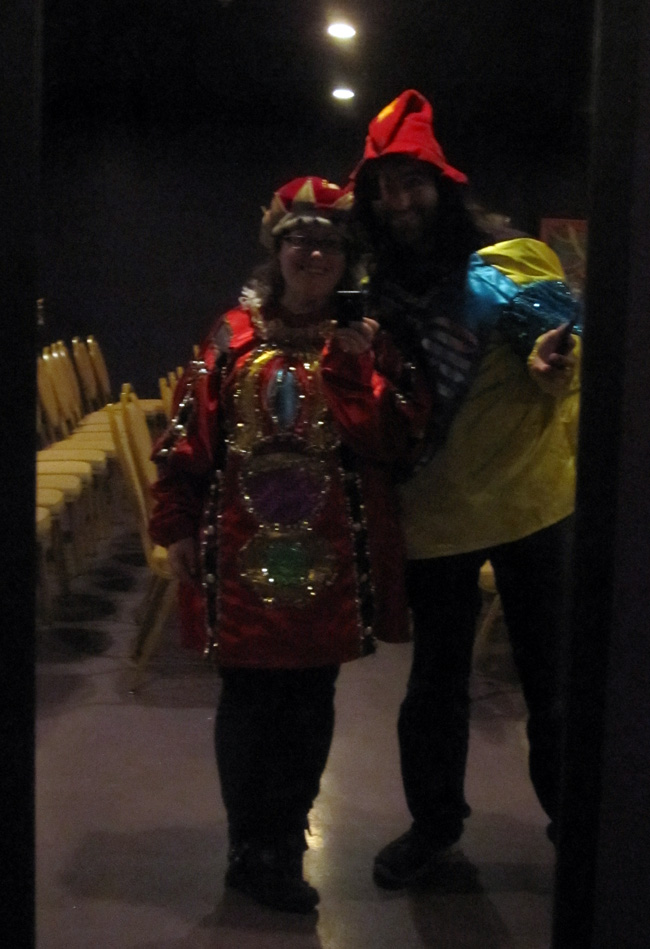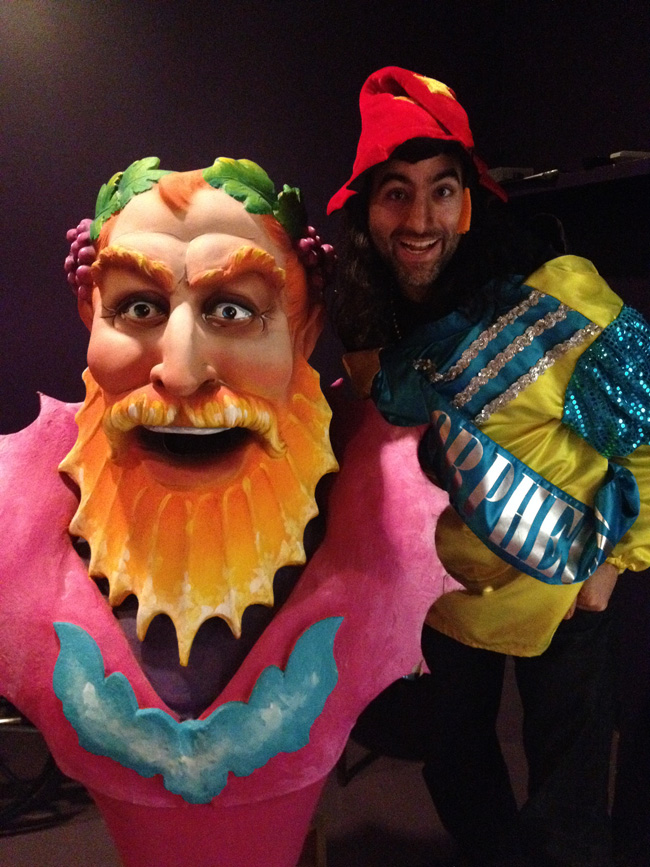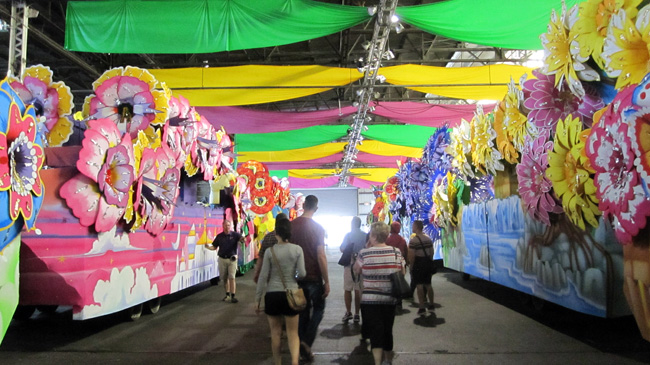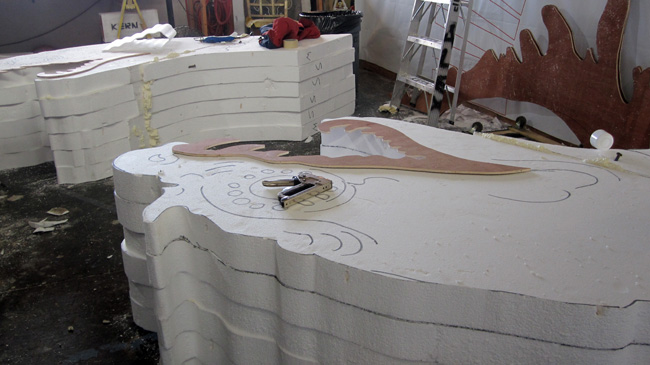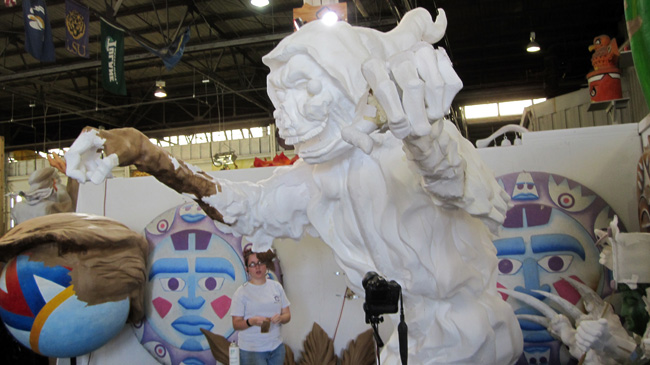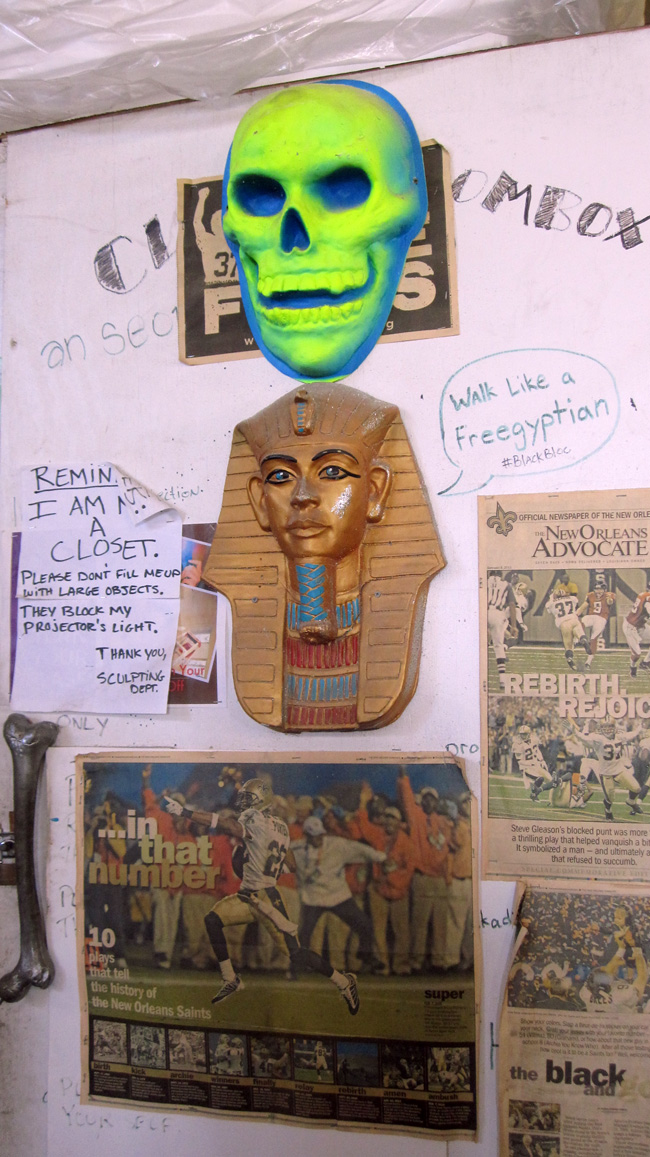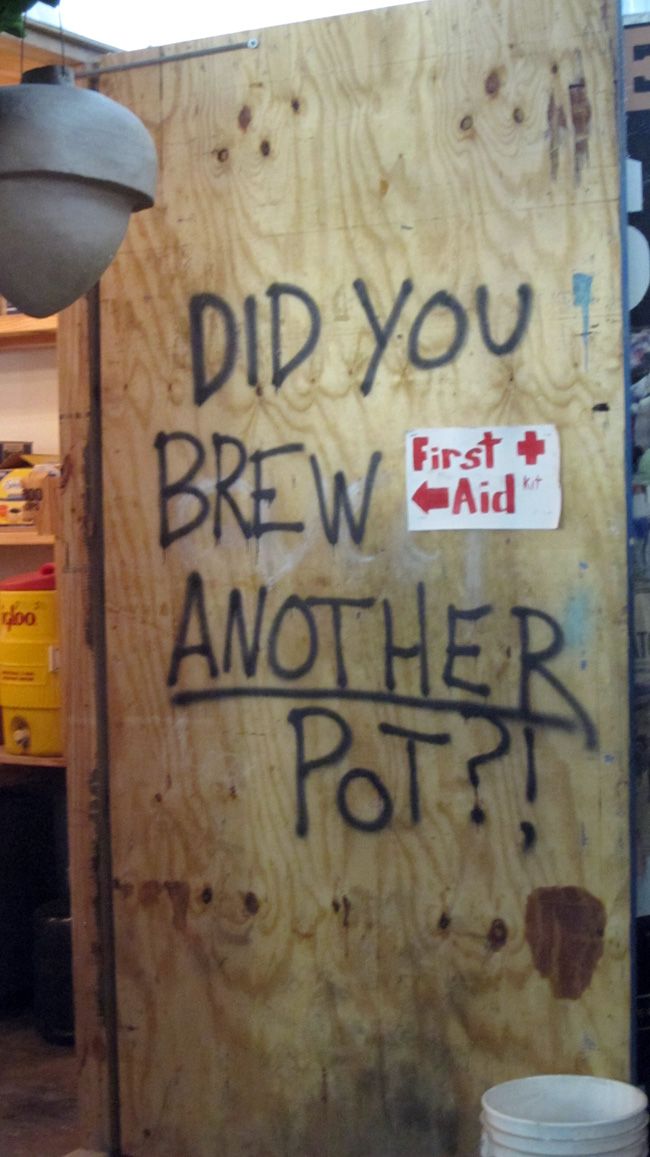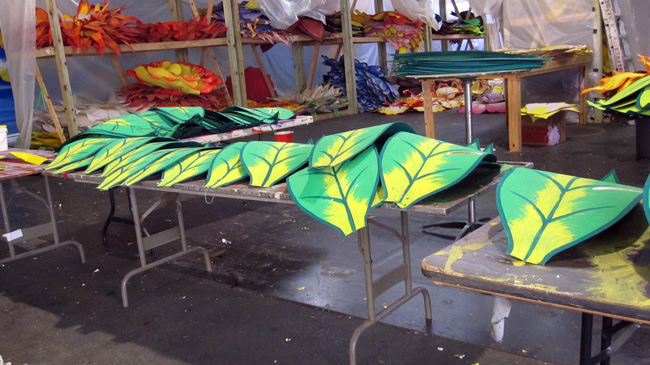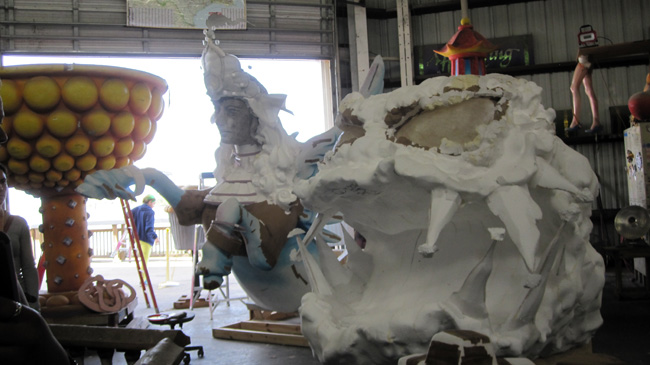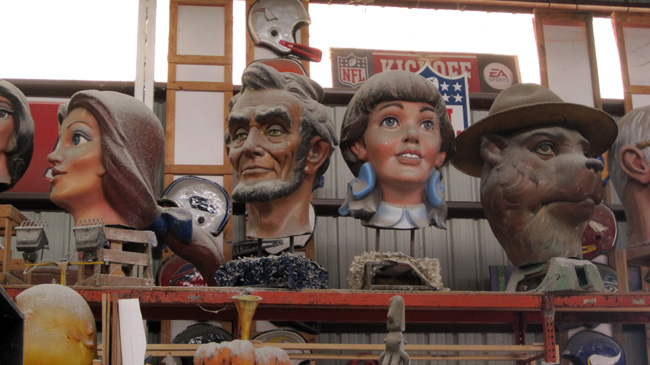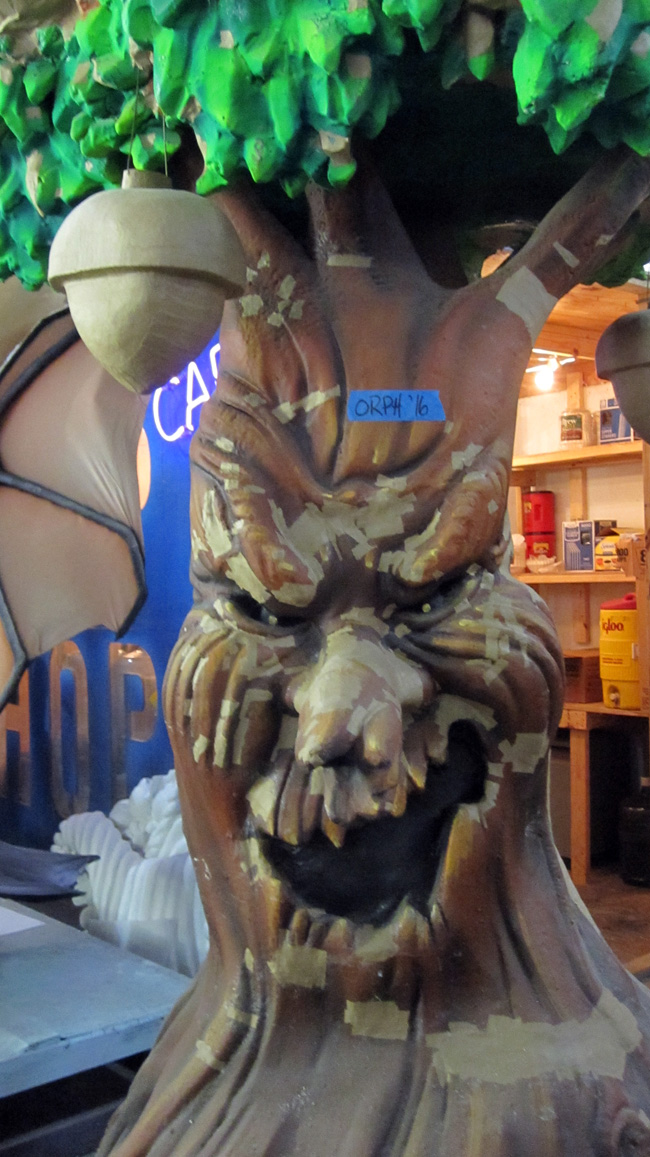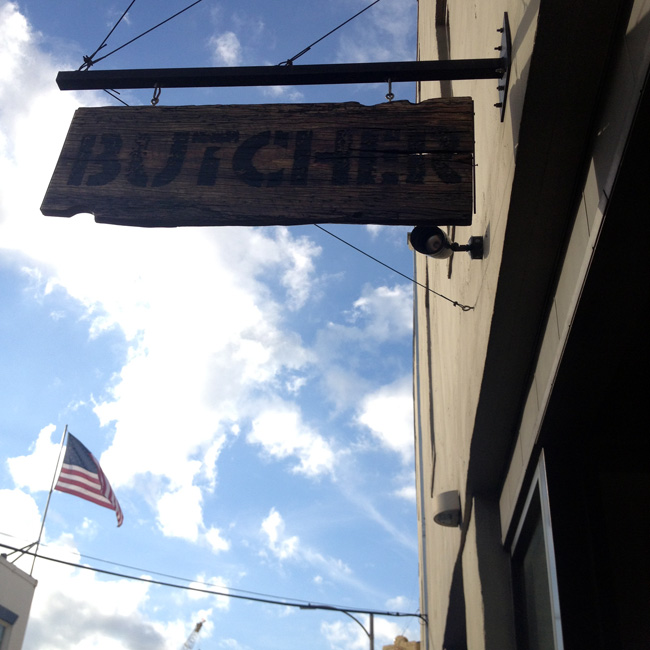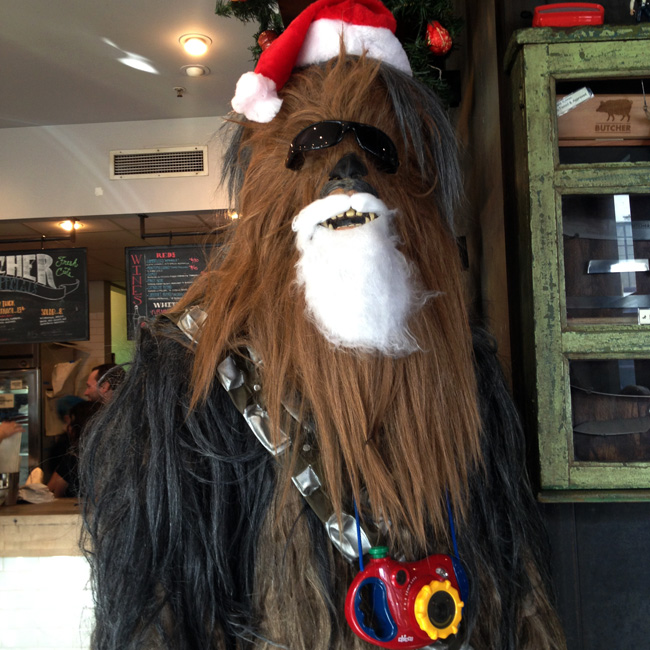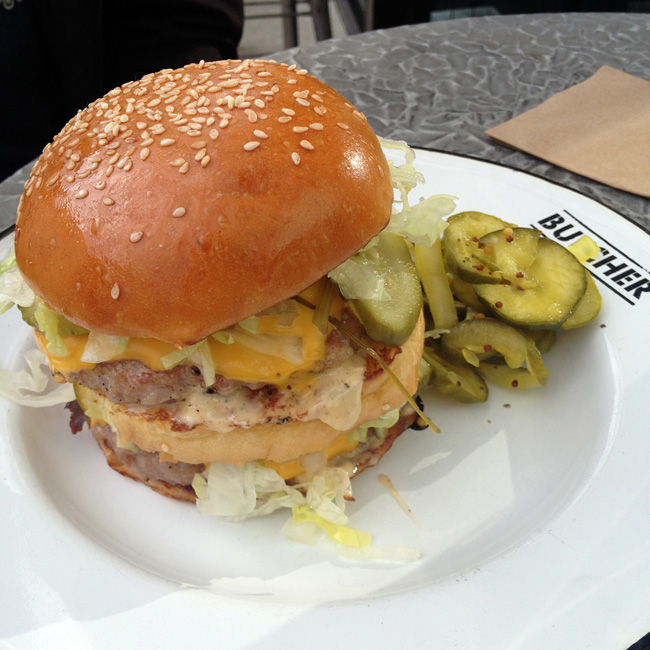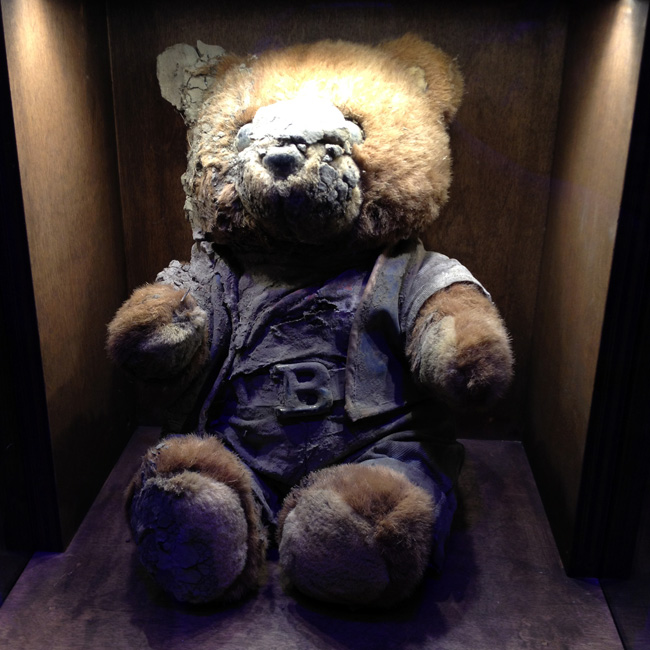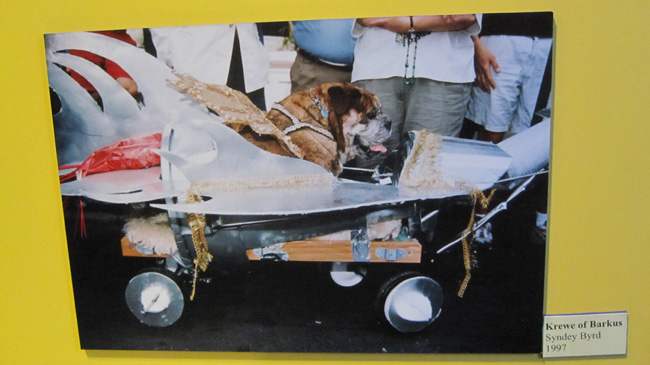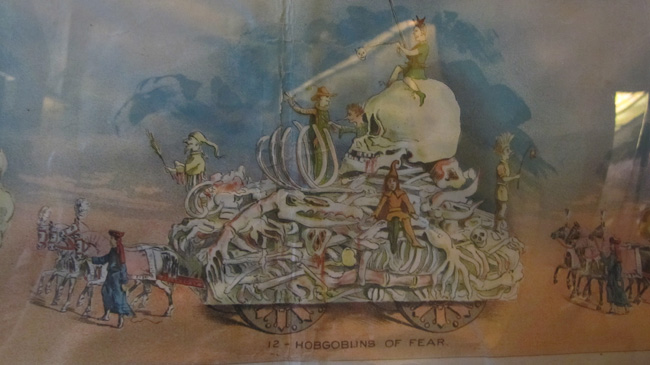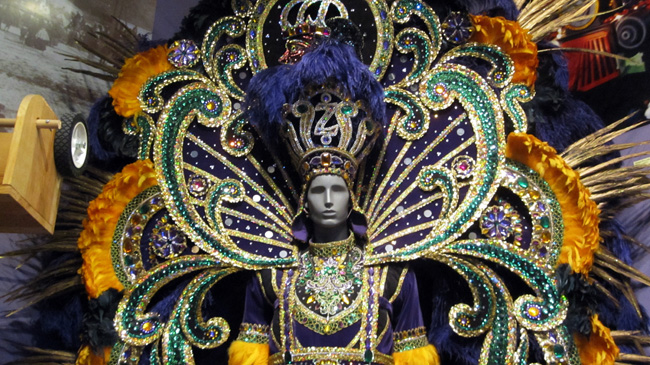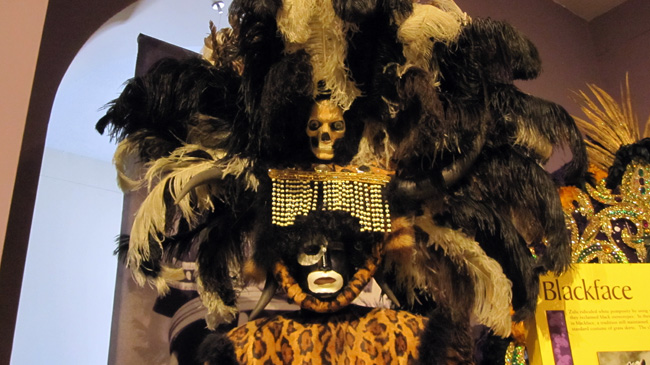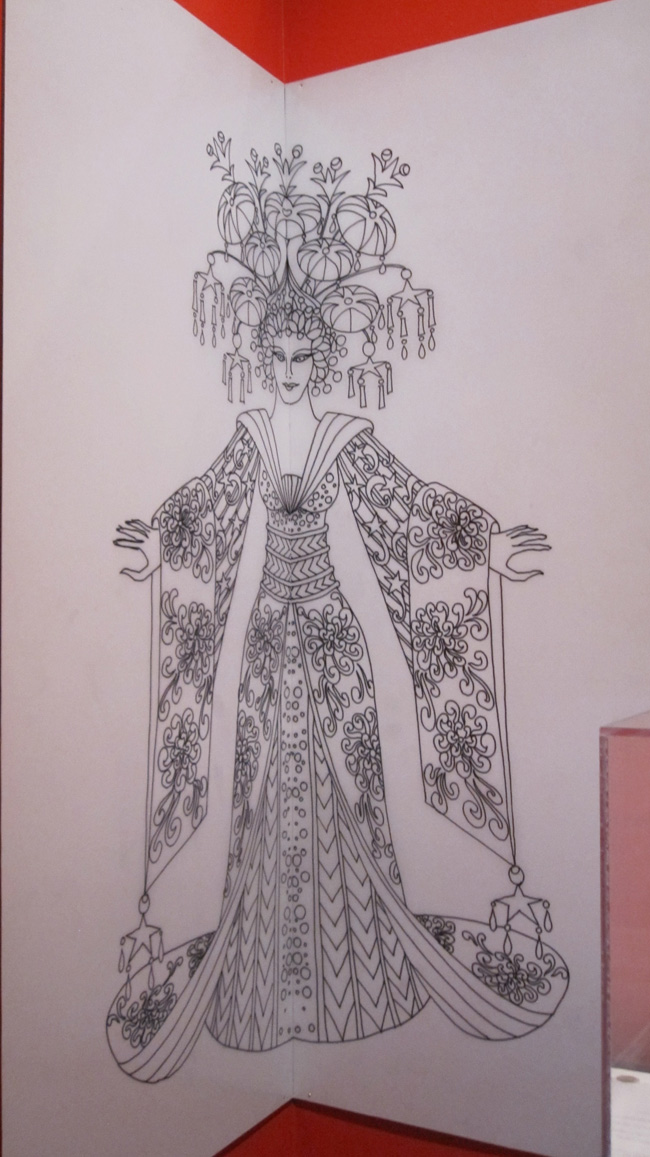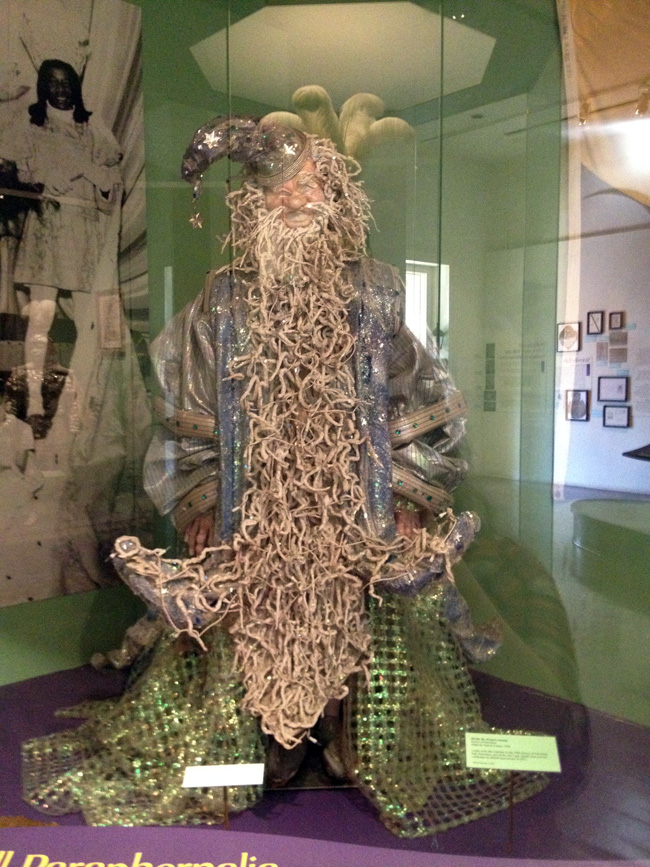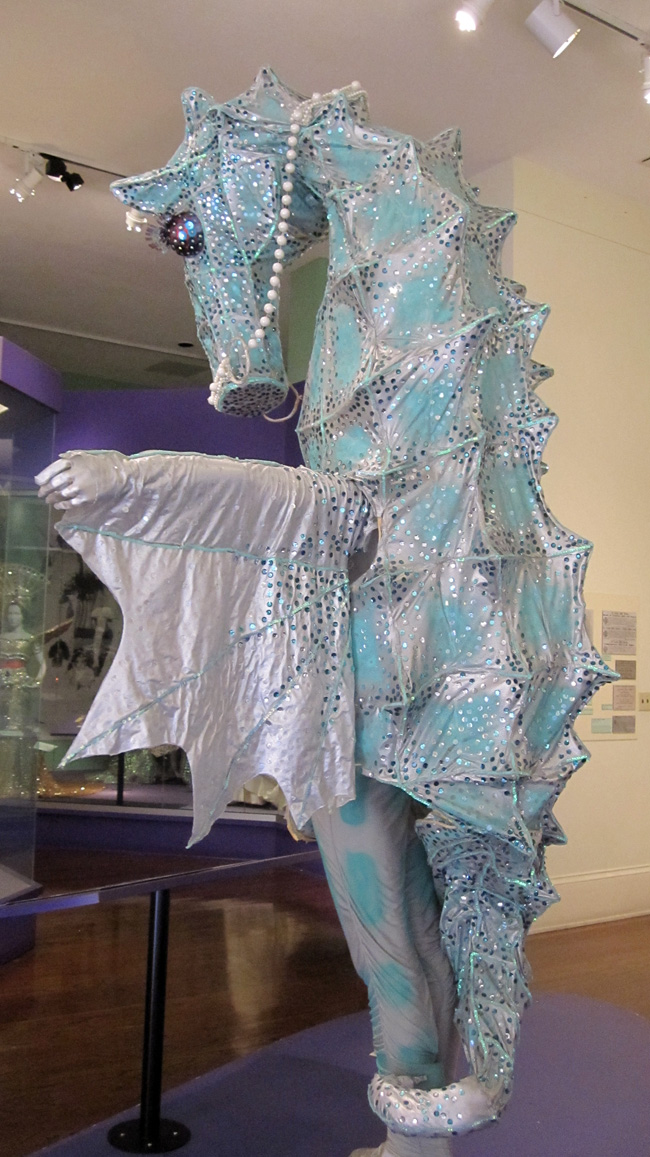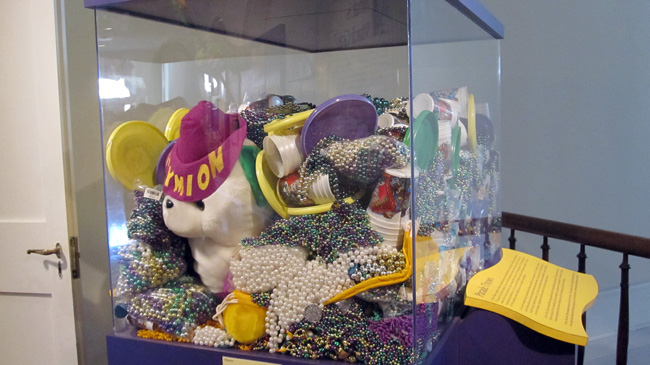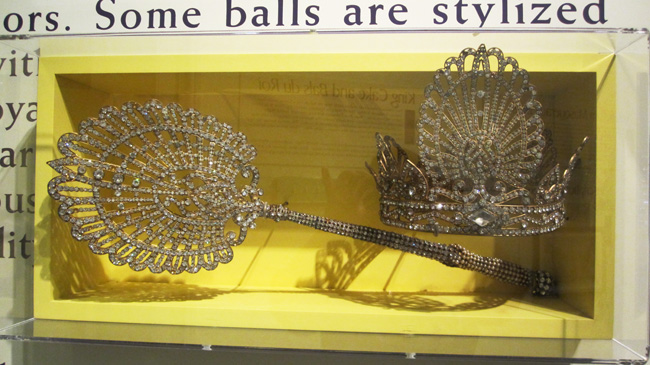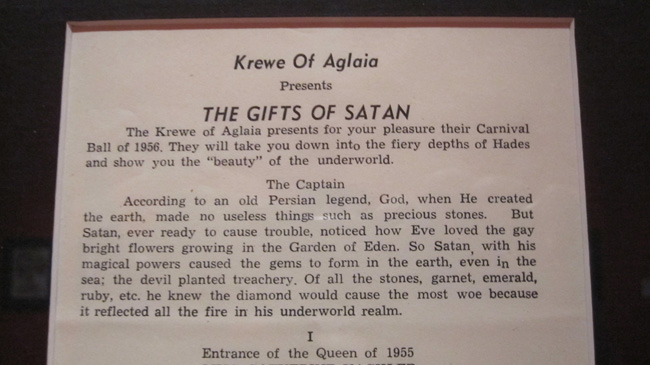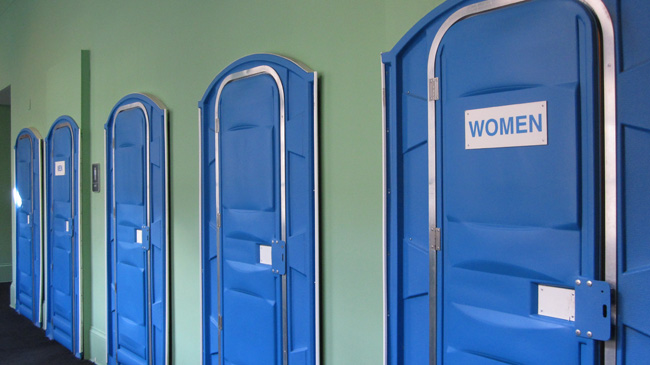“Sounded like some sort of…party going on in the background. Are any parties today, Skinner?”
“Nah. It’s not really a party town. Though if I remember correctly, they occasionally hold a function called Mardis…something.”
So last week on the blog, I talked a little about the various Mardi Gras functions–the krewes, the parades, and the balls. Today, I’m going to go a little more in-depth about the parades and what it takes to get one from concept to reality. To learn about that myself, I took a trip to Mardi Gras World, a working warehouse on the New Orleans waterfront.
First, our group was led into a back room, fed a slice of king cake (any tour that starts off with cake is a good tour), and shown a video about the history of Mardi Gras parades in New Orleans. Afterward, we were given free rein with a rack of costumes and the props scattered around the room. People didn’t seem as stoked about it as I was, but got into the spirit after I immediately popped out of my seat and slapped on a costume. As their once and future king, it was only right and natural that I set an example for the rest of the room to follow. Heavy is the head that wears the polyester crown.
Once we’d had our fun, we were led into the workshop, where Mardi Gras is made. Building Mardi Gras parade floats and props is a year round job. The floats themselves are owned and used exclusively by each krewe–they used to be drawn by teams of horses or mules, but are now essentially giant rolling tractor tanks. The naked floats cost around $80,000 apiece, and you need 14 floats minimum to have a Mardi Gras parade. Decorations on each can easily run upwards of another $10,000, so you’re looking at over 1.13 million dollars for a krewe’s first parade, and that’s excluding costumes and parade throws. This is not a cheap enterprise. Now consider that there are around 70 krewes, and they each run their one parade one time over the course of the festival. One and done. There is a huge amount of money invested for a few miles of parading.
To help bring costs down, the props on the floats are rented rather than bought outright. When a krewe has decided on the theme for their parade and a general outline of what they want, they’ll call the prop warehouse and let them know, because it’s entirely possible that they’ll have something onsite that can be slightly reworked and reused, and that’s significantly cheaper than building a new prop from scratch. It also means that the krewe doesn’t have to store enormous props from year to year that they themselves might not be able to or want to reuse in a future parade. Some krewes, to save money, will also decorate their own floats, make their own costumes, and build their own props. Those who don’t rely on workshops like this one to make their ideas materialize.
What’s involved in making a prop? First, a prop is sculpted in miniature in clay as a maquette. This can then be sliced to show the artists how to replicate it in a much larger scale. Many large props start as humble sheets of foam, which are glued together with expanding foam into a large stack. This resulting stack is light, carveable, and sandable. Once the final shape is achieved, the foam is then covered with paper mache, primed, and painted. Before it’s painted, it’s my understanding that it can also be used as a mold to create fiberglass replicas, so if they need multiples of the same prop, it’s much faster and easier to crack out a second fiberglass version than to create a second identical one from scratch.
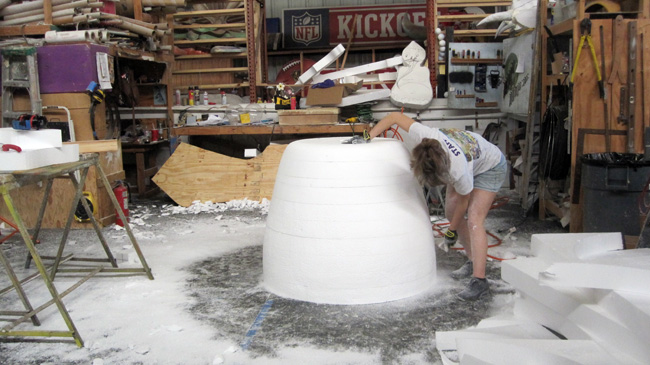
Once the official tour had finished, we were given the opportunity to wander around the warehouse at our leisure, taking photos, observing the artists at work, and trying to take everything in (there’s so much stuff in the warehouse that it’s hard to see everything, much like House on the Rock). I couldn’t help but feel a little overwhelmed with the feeling that this is what I’m supposed to be doing with my life–helping create one of the biggest, artsiest parties in the world every year. That is, of course, if I had any artistic talent other than stringing together lots of curse words, which unfortunately doesn’t cause my inbox to be overflowing with cool job offers. But now that I know how it’s done, maybe I can try to put together some foam props for future Halloweens, ignoring the fact that the last time I used a can of expanding foam, I made such a mess and it enraged me so greatly that I wanted to throw the can into the sun. But you know, other than that, I’m good to go.
(There are lots of photos of amazing finished props under the cut, including King Kong, Cerberus, dragons, and gold leafed-everything. This post was getting photo-heavy as it was.)

